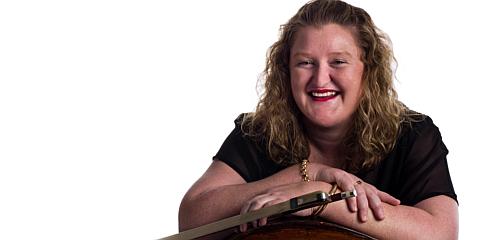Baroque Oboe can be heard on Thursday 20 June at Iwaki Auditorium, ABC Southbank Centre and Sunday 23 June at Melbourne Recital Centre.
Emma Sullivan is MCO’s Principal Double Bass and writes about music from an orchestral musician’s point of view for each of our concerts.
MCO: This program features works titled “concerto grosso” by composers from across 18th century Europe. Where does a concerto grosso fit into the history of the concerto, and is the concerto grosso stylistically homogenous across these three composers or are there important differences?
Emma: The concerto grosso form emerged in the second half of the 17th century and was popularised by Italian composer Corelli. The form refers to a work where the musical material alternates between the full ensemble and a small group of soloists, as opposed to the standard concerto (also established in the Baroque era), which usually showcases a singular performer. There are two main forms of concerto grosso – the concerto da chiesa (church concerto), which alternates slow and fast movements, and the concerto da camera (chamber concerto), which incorporates popular dance forms of the period, often introduced by a prelude.
Our featured works by Corelli and Avison both fall into the concerto da chiesa category. However, while Corelli’s writing is a clear example of Baroque style, the English composer Avison traverses the Baroque and Classical periods. This is most apparent in the opening and closing movements of his work, which feature the melody and accompaniment style of the Classical era. Although heavily influenced by Corelli, Handel elevated the concerto grosso genre, creating works of greater substance and expressive range. Opus 6 No 8 follows the concerto da camera model, comprising six contrasting dance movements that represent the diversity of Handel’s compositional style. My personal favourite is the elegantly lilting Siciliana, which gives a gentle nod to the composer’s operatic writing.
MCO: How does the oboe work as a solo instrument? Is the oboe unchanged since the Baroque era?
Emma: Even in the symphony orchestra context, the oboe is a distinctive and uniquely expressive voice. It works beautifully as a solo instrument with chamber orchestra, as the strings provide a warm accompaniment without overpowering the solo voice. This allows the soloist a wide range of dynamic and tonal possibilities and ample artistic freedom. And in the hands of our brilliant soloist Diana Doherty, audiences are definitely in for a real treat.
The oboe, like many instruments, has evolved over time. The modern oboe has a more narrow body (formally known as the “bore”) and many more keys than the Baroque oboe and this allows the instrument to cover a significantly wider span of notes. Joe Chindamo’s Sanctuary takes full advantage of the possibilities of the modern oboe, exploring its full tonal and emotional range. Our program also features two Baroque concertos for oboe by Vivaldi and Albinoni. These works both feature bubbling fast movements full of virtuosic passagework and striking slow movements. I particularly love the middle movement of Vivaldi’s Concerto for Violin and Oboe, where the oboe has a poignant, singing melody that is enhanced by an undulating solo violin counterpoint.
MCO: Joe Chindamo is an unusual musician in that he’s had very successful careers in both jazz and classical styles. Having heard Sanctuary, what do you think the influences are on the music and what should audiences listen for in this Victorian premiere?
Emma: I read in an interview given by Joe Chindamo that he believes erecting barriers between artistic genres and valuing one over the other is akin to musical racism. You can hear this sentiment in Sanctuary – it is a very moving commentary on the plight of refugees that transcends the concept of musical genre. You can certainly hear the influences Joe has noted, which range from the Italian pop records of his childhood to the work of 20th century greats including Bartok, Prokofiev and Shostakovich. However, the most powerful influence on the music is the narrative. Stunning long lines in the oboe and cor anglais solos accompanied by lush string harmonies contrast with moments of frenetic energy to create a work of great emotional depth and expression.

